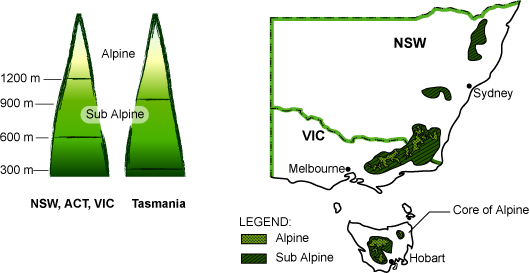Alpine areas are defined as those areas which are 1,200 m or more above Australian height datum (AHD) for NSW, ACT and Victoria and 900 m or more above AHD for Tasmania.
Sub-alpine areas are those areas 600 - 1,200 m in NSW, ACT and Victoria and between 300 - 900 m in Tasmania.
The BCA requirements only apply to alpine and sub-alpine areas in which the snow loads are significant. In some sub-alpine areas, successive snowfalls are not likely to accumulate and therefore the snow loads are not considered to be significant.

These areas require compliance to the BCA for the following:
- external doorways
- external ramps
- access bridges
- access for firefighting vehicles.
For example, external stairways, ramps, access bridges or other trafficable structures of a building must have:
- a floor surface that consists of steel mesh or other suitable material if it is used as an exit
- any required railing (balustrade) or other barrier constructed so that its sides are no more than 25% solid.
Refer to the BCA, Section 3.7.5 Alpine areas for more information.
